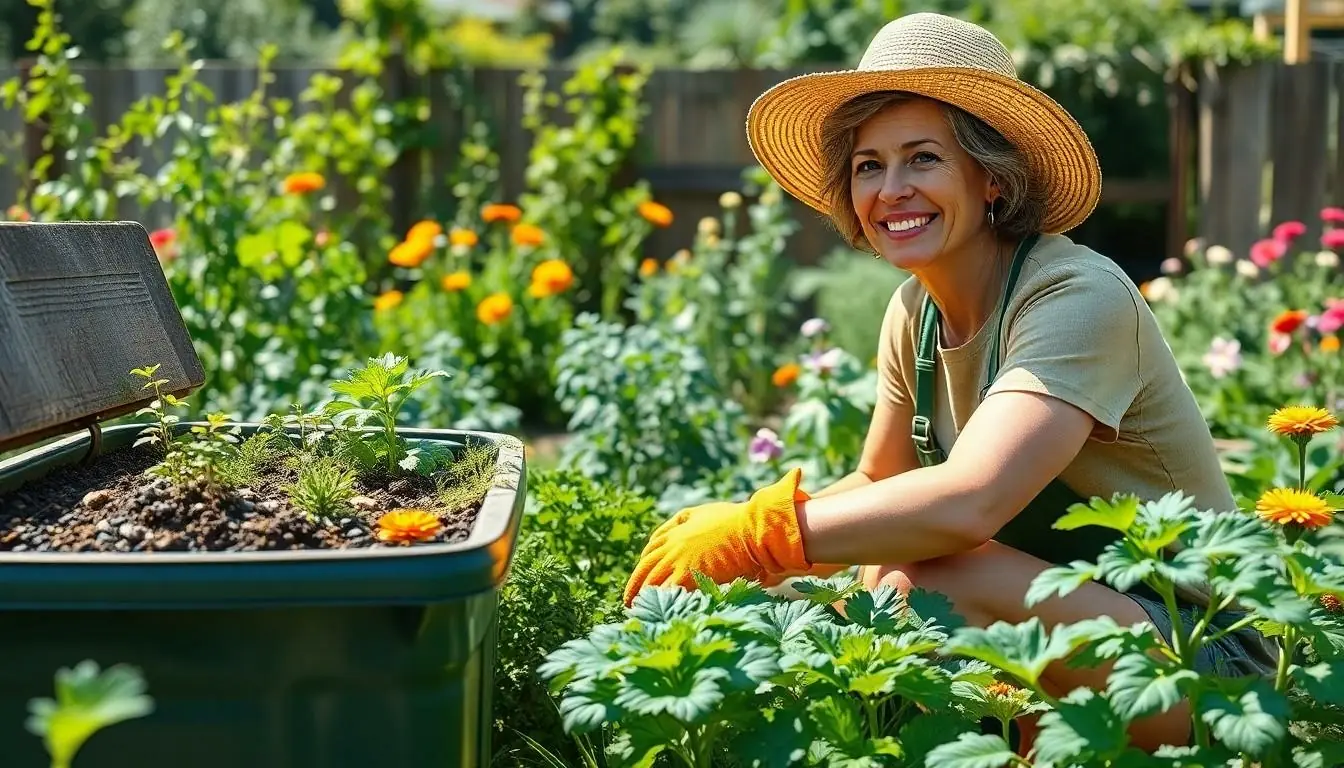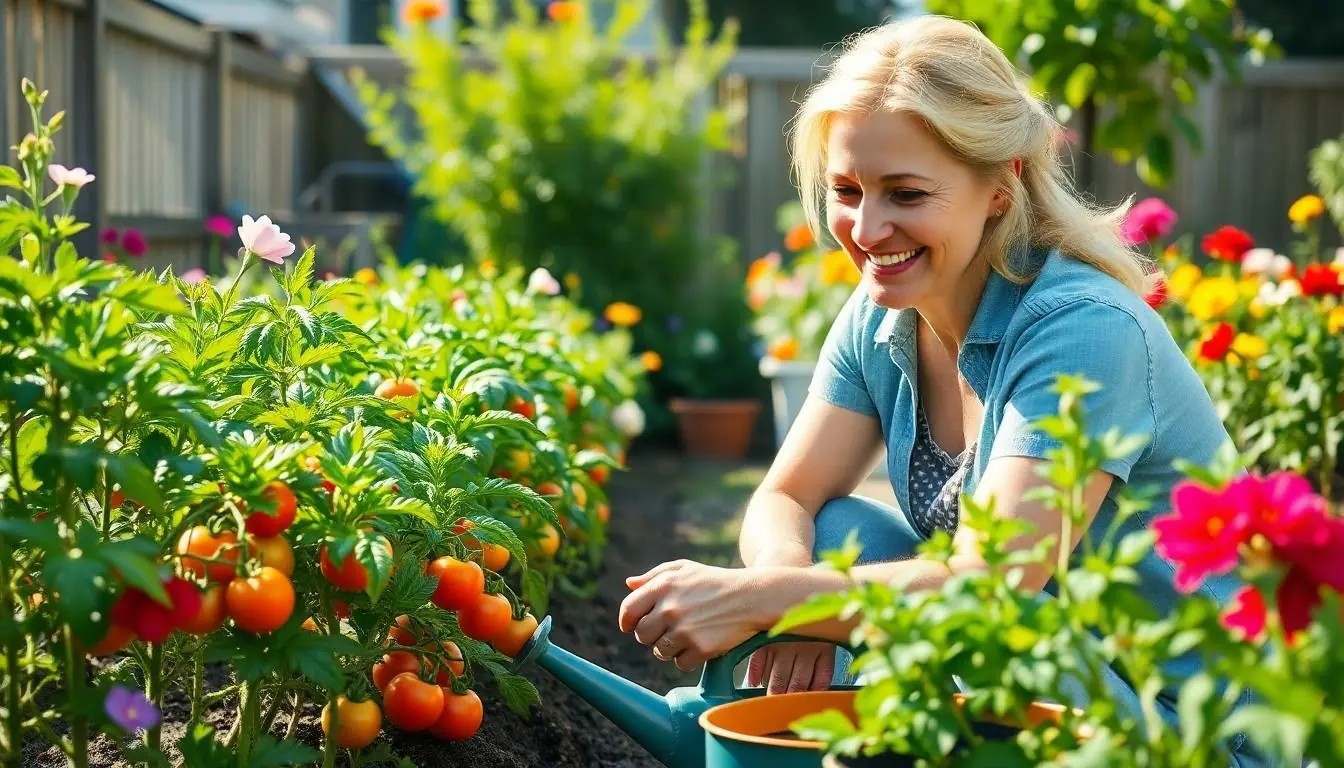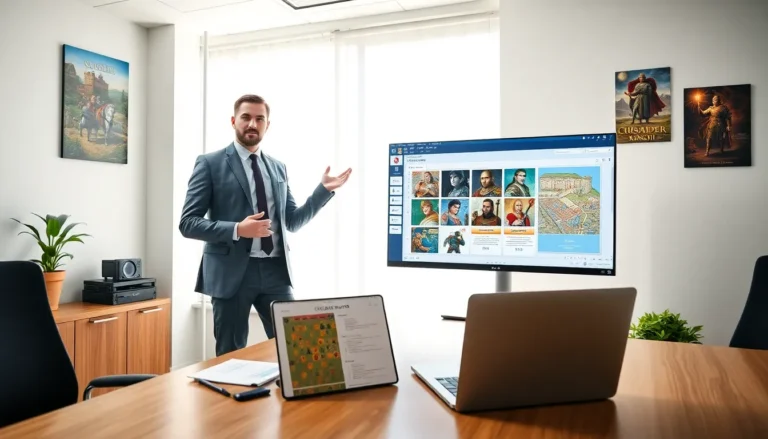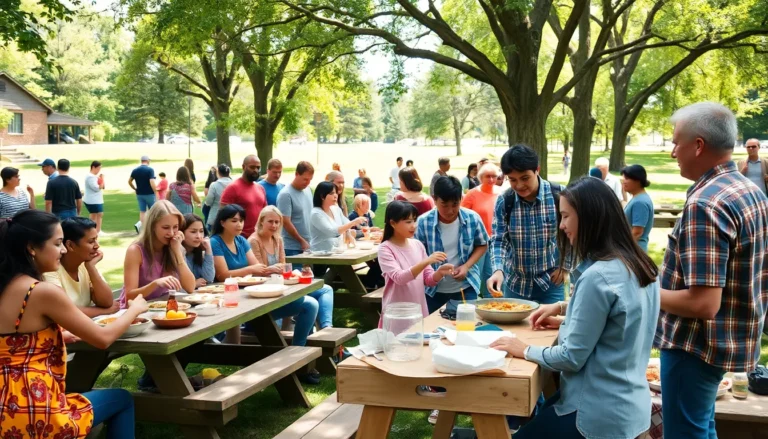Table of Contents
ToggleImagine waking up to the sound of chirping birds instead of blaring alarms, sipping fresh coffee brewed from beans you grew yourself, and knowing that your carbon footprint is smaller than your pet hamster’s. Self-sustainable living isn’t just a trend; it’s a lifestyle that turns the dream of independence into a hilarious reality.
What Is Self Sustainable Living?
Self-sustainable living encompasses practices that prioritize self-sufficiency and minimal environmental impact. This lifestyle encourages individuals to meet their needs while promoting ecological balance.
Definition and Concept
Self-sustainable living involves producing food, generating energy, and maintaining resources independently. It focuses on creating systems that operate without depleting natural resources. Individuals practicing this lifestyle often raise their own vegetables, harvest rainwater, and utilize renewable energy sources. Concepts such as permaculture and community gardening support these methods. By adopting this way of life, people reduce dependence on external systems while fostering resilience.
Importance of Self Sustainability
Self-sustainability holds significant importance in today’s society. It addresses concerns related to resource scarcity and environmental degradation. Adopting this lifestyle reduces carbon footprints, conserves water, and promotes biodiversity. Community engagement also plays a critical role; individuals often share knowledge and resources, strengthening bonds. Economic advantages come from decreased utility costs and the potential for local food production. Embracing self-sustainable living ultimately leads to healthier lifestyles and a happier planet.
Benefits of Self Sustainable Living

Self-sustainable living offers numerous benefits that contribute to both personal well-being and environmental health.
Environmental Impact
Self-sustainable living significantly reduces one’s carbon footprint. Practicing methods like permaculture promotes biodiversity, which enhances ecosystem health. Growing food at home minimizes transportation emissions, leading to cleaner air. Utilizing renewable energy sources, such as solar panels, decreases reliance on fossil fuels. Water conservation strategies help protect local water sources, maintaining vital resources for future generations. Each of these practices contributes to combating climate change, fostering a healthier planet.
Economic Advantages
Economic benefits arise from self-sustainable living. Reduced utility costs result from generating one’s own energy and growing food. Savings increase when relying less on commercial grocery stores and energy providers. Local food production enhances community economies, keeping money circulating within the area. Investments in sustainable practices often yield long-term financial returns. Overall, embracing this lifestyle can lead to significant savings and financial independence.
Key Components of Self Sustainable Living
Self-sustainable living includes essential components that promote ecological balance and self-sufficiency. These components focus on reducing environmental impact while fulfilling daily needs.
Renewable Energy Sources
Solar panels provide a widely adopted method for generating electricity, harnessing sunlight to power homes. Wind turbines also contribute to renewable energy, converting wind energy into usable power. Additionally, micro-hydro systems allow for energy generation from flowing water, especially in rural areas. Each of these sources decreases reliance on fossil fuels, supporting a sustainable energy future.
Water Conservation Techniques
Rainwater harvesting systems collect and store rainwater for irrigation and household use, minimizing municipal water reliance. Drip irrigation efficiently delivers water directly to plant roots, reducing waste and ensuring optimal hydration. Greywater recycling repurposes water from sinks and showers for landscape irrigation. Implementing these techniques fosters responsible water use while protecting local water supplies.
Sustainable Food Practices
Permaculture principles guide sustainable food practices, focusing on natural ecosystems to cultivate crops. Community gardens create spaces for neighbors to grow food collectively, enhancing social ties while increasing local food production. Crop rotation and companion planting improve soil health and reduce pest issues, promoting biodiversity. Integrating these practices ensures food security and environmental sustainability in one’s lifestyle.
Challenges and Solutions
Self-sustainable living presents various challenges, yet it offers numerous opportunities for creative problem-solving.
Common Obstacles in Self Sustainable Living
Limited access to land often hinders individuals from growing their own food. Seasonal weather variations can affect crop yields and create uncertainty in food production. Additionally, a lack of knowledge about sustainable practices may discourage newcomers. Financial constraints might prevent investment in renewable energy systems. Access to resources, such as water, could limit effective practices like rainwater harvesting or irrigation. Lastly, community engagement varies; not everyone benefits from local networks that support sustainable initiatives.
Innovative Solutions and Strategies
Education plays a key role in overcoming knowledge gaps. Participating in workshops on sustainable practices empowers individuals to maximize their efficiency. Collaborating with local gardening clubs fosters community support. Investing in raised garden beds allows better land use even in small spaces. Seeking grants or subsidies for renewable energy installations eases financial pressure. Utilizing technology, such as mobile apps for gardening tips or weather forecasts, streamlines sustainable living practices. Sharing resources within community networks enhances collective resilience, encouraging sustainable living across various backgrounds.
Getting Started with Self Sustainable Living
Embracing self-sustainable living involves concrete actions and informed choices. Starting small can lead to significant changes.
Practical Steps for Beginners
Begin by assessing available space for growing food. Container gardening works well for those with limited outdoor areas. Next, prioritize local, organic seeds for planting, ensuring a healthy start. Incorporating composting practices benefits soil health and reduces waste. Engage with community gardening groups to gain tips and support. Reducing energy consumption also plays a vital role; simple actions like turning off lights when not needed make a difference. Lastly, exploring seasonal and local produce enhances dietary health while lowering carbon footprints.
Resources and Tools to Consider
Utilizing gardening apps can streamline plant care and help track growth. Exploring local agricultural extension services provides access to invaluable knowledge and resources. Investing in quality tools like hand trowels and soil testers supports efficiency in gardening efforts. Community workshops often offer education on sustainable practices and renewable energy setups. Researching grants for solar panels and rainwater harvesting systems can offset initial costs. Joining online forums aids in staying updated on best practices and innovations in self-sustainable living.
Embracing self-sustainable living offers a pathway to greater independence and environmental stewardship. By adopting practices that prioritize self-sufficiency and ecological balance, individuals can significantly reduce their carbon footprints while enjoying the benefits of homegrown food and renewable energy.
While challenges exist, innovative solutions and community support can help overcome obstacles. Starting small and gradually integrating sustainable practices into daily life makes this lifestyle accessible to anyone.
Ultimately, self-sustainable living not only enhances personal well-being but also contributes to a healthier planet. As more people engage in this lifestyle, the collective impact on communities and the environment can be transformative.






